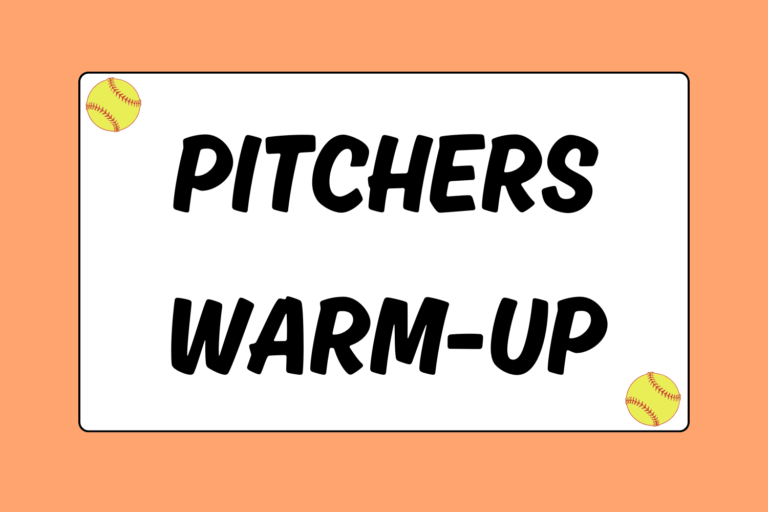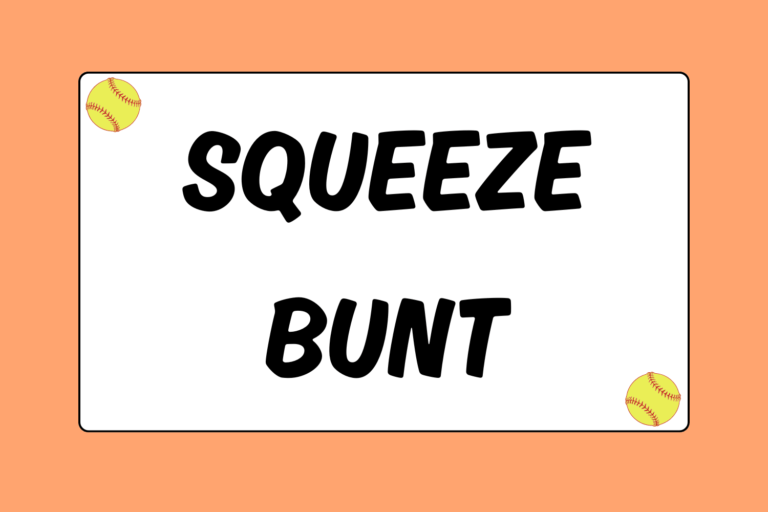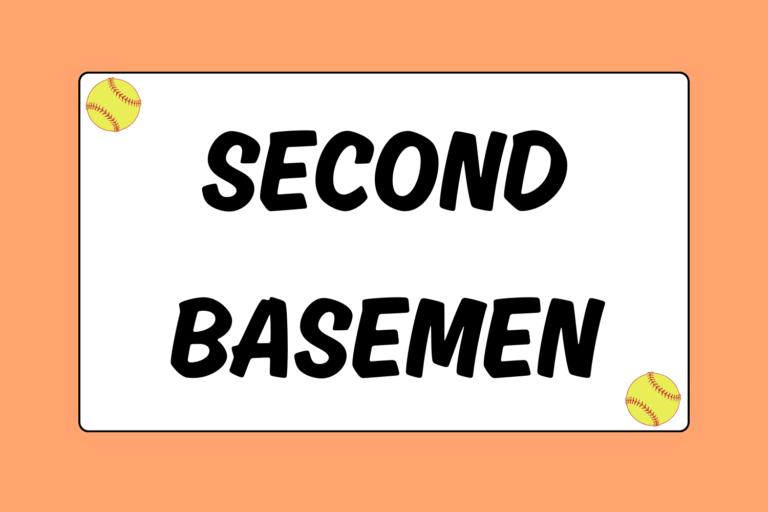To have a successful softball team, the shortstop needs to be one of the strongest and most vocal players on the field. The middle infielders — the second baseman and shortstop — are responsible for most of the infield’s territory and will see most of the action in the infield. Our guide, Defensive Tips for Second Basemen in Softball, already describes what it takes to be a strong second baseman. But both players need to be fully prepared for anything! This softball guide will discuss the attributes a shortstop needs to be an invaluable asset on her team.
The Basics
If you’re looking to play shortstop, there are a few things you’ll need to know before taking the field: The right stance, how to get into position, and how to field every type of ground ball.
Stance
Your stance will determine how well you react to a ground ball. You need to be relaxed, but also alert and light on your feet. In order to accomplish this, most shortstops will walk into their stance, timing it with the pitcher’s motion:
- When the pitcher is rocking back, take one small step forward with your right foot, followed by your left. As your left foot lands, you’ll gradually lower your glove onto the dirt.
- Square your feet to the batter, and set them wide enough apart so you are balanced. Keep your knees bent and back straight, and lean forward at the waist.
- Open your glove to the batter, ensuring it’s in contact with the ground. Keep your throwing hand poised to the side or above your glove.
Field Positioning
Where you set up on the field heavily depends on the situation:
- If there are less than two outs and no runners on base, most shortstops will move into the baseline, or slightly behind it.
- If there are runners on base, the shortstop will usually set up right inside the baseline, or slightly in front of it.
- If there is a runner on third base with less than two outs, the shortstop will usually come in near the pitcher’s mound so she can ensure the out at the plate.
Fielding Grounders
Every shortstop needs to be able to handle whatever comes at her with both grace and ease. There are three types of grounders you’ll see at shortstop: Hits right at you, hits to your left, and hits to your right. These hits may also be long bounders or short hops. The best way to field each type of grounder (depending on the situation) will be discussed below; if you need a refresher course on fielding ground balls, check out our How to Field a Ground Ball in Softball guide.
Making Plays
When it comes to getting the out, how you approach and then throw the ball will depend both on where the ball is hit, and the location of the play.
Plays to First Base
A play at first base will call for the longest and most accurate throw. Depending on where and how the ball is hit, follow these tips to complete the play:
- Hits right at you: Charge the ball (if you need to), then set your feet and throw.
- Hits to your left: Hits to your left will lead you toward second base. You should be able to field these balls in front of your or just outside your left foot. Then set your feet and throw.
- Hits to your right: If the hit is to your right, you need to hustle to try and field it in front of you. If you can’t get there in time, allow your right foot to cross over your left as you bend your knees and field the ball with your backhand. Once you’ve secure the ball, take a step toward your target with your right foot to initiate your throw, bring your hand into throwing position, and then step toward first with your left foot and throw. Especially because you’re using your backhand, this play has to be quick.
Plays to Second Base
Most of the time, a play at second base will either be a quick toss or a side-armed throw, though it depends on where the ball is hit:
- Hits right at you: After securing the ball, you can jump up with both feet and turn 180 degrees so you are facing second base when you land, and then make a side-armed throw. Or, you can field it, turn your body as you kneel down on your throwing-side knee, and make a quick toss to second. You can also just pivot and
- Hits to your left: Allow these hits to lead you to second base. Stay low, and then make a quick underhanded toss to second. Then follow your throw to ensure its accuracy.
- Hits to your right: If you can’t get to these balls in time to field them in front of you, allow your left foot to cross over your right as you bend your knees to field the ball with your backhand. Then step through with your right foot (stepping toward third) and allow your weight to shift with your step. Then shift your weight back toward second base — without stepping — as you make a side-armed toss to the bag.
Plays to Third Base
A play at third base will usually involve a side-toss or an underhanded flip, but again, it will all depend on where the ball is hit:
- Hits right at you: Field the ball in front of you. Then either turn your body and make an underhanded toss or side-toss to third. If you are far from third, turn your body toward the bag before making an overhanded throw.
- Hits to your left: Allow the ball to lead you to second base. Stay low and turn glove-side to rotate your body toward third. Then set your feet and make an accurate, overhanded throw.
- Hits to your right: Allow the ball to lead you to third, and then make an underhanded toss to the bag. Following your throw will ensure more accuracy.
Plays at Home
Plays at home are often crucial. If there is a play at the plate, you’ll usually be creeping in near the pitcher’s circle so you can charge in and quickly set your feet to throw home. Also, these throws should be low so the catcher can catch it and make a sweeping tag all in one motion.
Hot Tip: Work on Your Side-toss
A side-toss is exactly what it sounds like: A throw made by releasing the ball from your side with your palm facing outward. You should still feel the ball roll off your fingertips, though! If you need a little practice, take a jog with a partner. For the first leg, you work on side-tosses and she works on underhanded tosses. On the way back, switch roles.
Covering the Bases
The two bases you’ll need to be ready to cover are second base and third base. Put simply, if the ball is hit to the right side of the field (from second base and over), you will be covering second base. If the ball goes to the outfield, you’ll cover second base and the second baseman will be the cutoff. If the ball is hit to the left side of the field, go for it! Your second baseman will cover the bag. Likewise, if it’s hit to the outfield, you’ll act as the cutoff.
The base-covering duties will also change depending on if there are runners on base. If there is a runner at first base, you will cover second base for the steal and the bunt. If there is a runner at second base, you will cover third base on a bunt or an attempted steal.
Going for Fly Balls
No ball should ever drop between the outfield and infield. Each infielder should be going hard until she is called off by an outfielder. Likewise, an outfielder should run in until she is called off by an infielder. However, someone has to call it! If both girls are going for it, assuming the other is going to get it, a collision can happen. The key to preventing a collision is to talk! As the shortstop, set the tone early. Go hard for every fly ball hit in your direction — even if it’s slightly out of your range — and always talk.
Hot Tip: Never Assume
Especially on fly balls, never assume the outfielder is going to catch it. Unless she is incredibly fast, an outfielder playing back at the fence probably won’t make it in time to field a ball that’s dropping at the edge of the dirt. Always run hard and assume it’s yours until you are called off.
Be the Leader
Every team has natural leaders on the field, and the shortstop is usually one of them. The shortstop needs to be vocal and enthusiastic. More often than not, her mood can affect the entire game. If you get the honor of playing shortstop, take it as a personal challenge to be the best!





